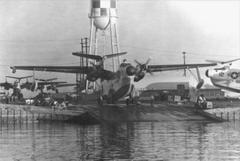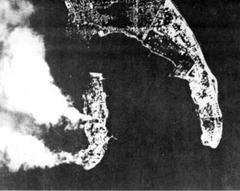
Fort San Felipe Visiting Hours, Tickets, and Historical Sites in Cavite City
Date: 04/07/2025
Introduction
Fort San Felipe in Cavite City stands as a monumental emblem of the Philippines’ rich colonial and revolutionary heritage. Established in 1609 during the Spanish colonial era, this granite fortress was constructed on Sangley Point to defend Cavite’s crucial port and the Manila-Acapulco Galleon Trade. Over the centuries, Fort San Felipe became the site of significant historical events, most notably the 1872 Cavite Mutiny—an uprising that ignited Filipino nationalism and paved the way for the Philippine Revolution.
Now located within the Philippine Navy’s Naval Base Cavite, Fort San Felipe offers guided tours by special arrangement, allowing visitors to explore its storied architecture, understand its role in maritime defense, and reflect on its symbolism in the Filipino struggle for independence. The fort serves as a gateway to other nearby historical attractions, including Cavite City Plaza, San Roque Parish Church, and the Aguinaldo Shrine, making it an essential stop for heritage travelers (Vigattin Tourism, Wikipedia, Sinaunang Panahon).
Table of Contents
- Historical Overview
- Architectural Features and Evolution
- The Cavite Mutiny of 1872
- American Period and Modern Significance
- Visiting Fort San Felipe: Hours, Tickets, and Access
- Accessibility and Travel Tips
- Nearby Attractions and Guided Tours
- Photographic Spots and Visuals
- Frequently Asked Questions (FAQ)
- Visitor Tips and Etiquette
- Conclusion
- References
Historical Overview
Early Foundations and Spanish Colonial Era
Fort San Felipe, or “Fuerza de San Felipe,” is among the oldest surviving military fortifications in the Philippines. Commissioned in 1609, it was built to protect the vital port of Cavite against pirates and foreign forces. The fort’s strategic position at the entrance to Manila Bay made it critical for safeguarding Spanish maritime interests and the Manila-Acapulco Galleon Trade (Vigattin Tourism).
Constructed with granite blocks, its original 30-foot-high walls and bastions formed a formidable defense. Over time, the fort underwent several expansions, notably in 1628, 1636, and the 18th century, as it adapted to military and environmental challenges (Manila News).
Maritime Significance
Cavite City was the principal port and shipyard for the Spanish Navy, and Fort San Felipe played a crucial role in the security of the Manila-Acapulco Galleon Trade (1565–1815) (Vigattin Tourism). The fort’s presence ensured the safety of merchant vessels and the bustling economic activity that characterized Cavite as the “shipping capital” of the era.
Architectural Features and Evolution
Structural Design
The fort originally had a quadrilateral layout with four corner bastions, as described in a 1659 report by Governor Sabiniano Manrique de Lara. The bastions, named after Catholic saints, provided overlapping fields of fire and were equipped with platforms for mounting cannons (Wikipedia, Military History Fandom).
Moats, perimeter walls, and buffer zones separated the fort from civilian areas for enhanced security (WITPress, p. 6). Notable architectural features include wide stone stairways, courtyards, and vaulted chambers for storage of gunpowder and munitions.
Environmental and Structural Challenges
Built on a shifting sandbar, the fort was frequently threatened by sea erosion and flooding. Spanish authorities implemented breakwaters and reinforced structures, but natural disasters, such as the 1687 earthquake, periodically caused significant damage, prompting continuous repairs (Manila News).
Modifications Over Time
During the American colonial period, parts of the fort were demolished to accommodate new military facilities, and only about half of the original structure remains today (WITPress, p. 6).
The Cavite Mutiny of 1872
Fort San Felipe is most famous as the site of the 1872 Cavite Mutiny. On January 20, 1872, approximately 200 Filipino soldiers and workers at the fort revolted against Spanish authorities. The uprising was quickly suppressed, but its aftermath was profound: the execution of the Gomburza priests (Mariano Gomez, Jose Burgos, and Jacinto Zamora) became a symbol of resistance and inspired the Philippine nationalist movement and revolution (Sinaunang Panahon, UPOU Philippine History).
American Period and Modern Significance
After the Spanish era, Fort San Felipe continued as a military installation under American administration. Today, it is managed by the Philippine Navy and serves as a tangible reminder of Cavite’s military and revolutionary heritage. The fort houses a small museum with naval memorabilia, antique cannons, and wartime relics, and is a site of remembrance for the martyrs of the Cavite Mutiny (Cavite City Government).
Visiting Fort San Felipe: Hours, Tickets, and Access
Access and Entry
Fort San Felipe is inside Naval Base Cavite, an active military facility. Public access is restricted and only possible via advance arrangement with the Philippine Navy or Cavite City Tourism Office. Walk-in visits are not allowed; all guests must present valid government-issued identification at the gate (Spot.ph, Metro Sun Daily).
Visiting Hours
Visits are typically arranged Monday to Friday, from 8:00 AM to 5:00 PM, but always depend on military activities and prior approval (Philippine Navy Official Site).
Tickets and Fees
There is no standard ticketing system or fixed entrance fee. Fees may apply for guided tours or special arrangements; confirm with the Cavite City Tourism Office or tour provider (Festive Pinoy, Cavite Provincial Tourism Office).
Accessibility and Travel Tips
- Accessibility: Due to uneven stone steps and narrow passageways, accessibility is limited for wheelchair users or those with mobility challenges.
- Travel Tips:
- Book your visit at least one week in advance.
- Bring a valid ID for security clearance.
- Wear comfortable clothing and footwear.
- Observe all military protocols.
- Confirm photography rules during your tour.
Nearby Attractions and Guided Tours
- Cavite City Plaza: Features monuments and a relaxing park setting.
- San Roque Parish Church: Historic church showcasing Spanish colonial architecture.
- Aguinaldo Shrine: The site where Philippine independence was declared.
Local tour operators offer packages that include Fort San Felipe and these sites, enriching your historical experience.
Photographic Spots and Visuals
- Capture dramatic shots of the bastions, stone walls, and cannons.
- Panoramic views of Manila Bay are best at sunrise or sunset.
- The fort’s interior courtyards and stairways make for excellent historical photography.
Images:
Frequently Asked Questions (FAQ)
Q: How do I visit Fort San Felipe?
A: Arrange your visit in advance through the Philippine Navy or Cavite City Tourism Office. Walk-in visits are not allowed.
Q: What are the visiting hours?
A: Visits are typically available Monday to Friday, 8:00 AM to 5:00 PM, by prior arrangement.
Q: Are there entrance fees?
A: No fixed fees; guided tours may have associated costs.
Q: Is Fort San Felipe accessible to persons with disabilities?
A: Accessibility is limited due to the historic architecture.
Q: Are guided tours available?
A: Yes, all visits are via guided tours led by knowledgeable guides.
Q: Is photography allowed?
A: Usually yes, but some areas may have restrictions—always confirm with your guide.
Visitor Tips and Etiquette
- Always coordinate with official channels for access.
- Dress modestly and comfortably.
- Bring water and avoid bringing large bags.
- Be respectful, especially in solemn or commemorative areas.
- Follow all safety and security instructions from your guide.
Conclusion
Fort San Felipe is a cornerstone of Philippine history, symbolizing both colonial power and the rise of Filipino nationalism. Its preserved bastions, museum artifacts, and role in the 1872 Cavite Mutiny make it an essential site for understanding the country’s heritage. While access is restricted, guided tours provide an immersive experience in one of the nation’s oldest fortresses.
Plan ahead, respect military protocols, and immerse yourself in the legacy of Fort San Felipe. For more heritage guides and travel inspiration, download the Audiala app or follow related official tourism channels.
References and Further Reading
- Vigattin Tourism
- Wikipedia
- UPOU Philippine History
- Metro Sun Daily
- Sinaunang Panahon
- Cavite City Government
- Cavite Provincial Tourism Office
- Philippine Navy Official Site
- Festive Pinoy


